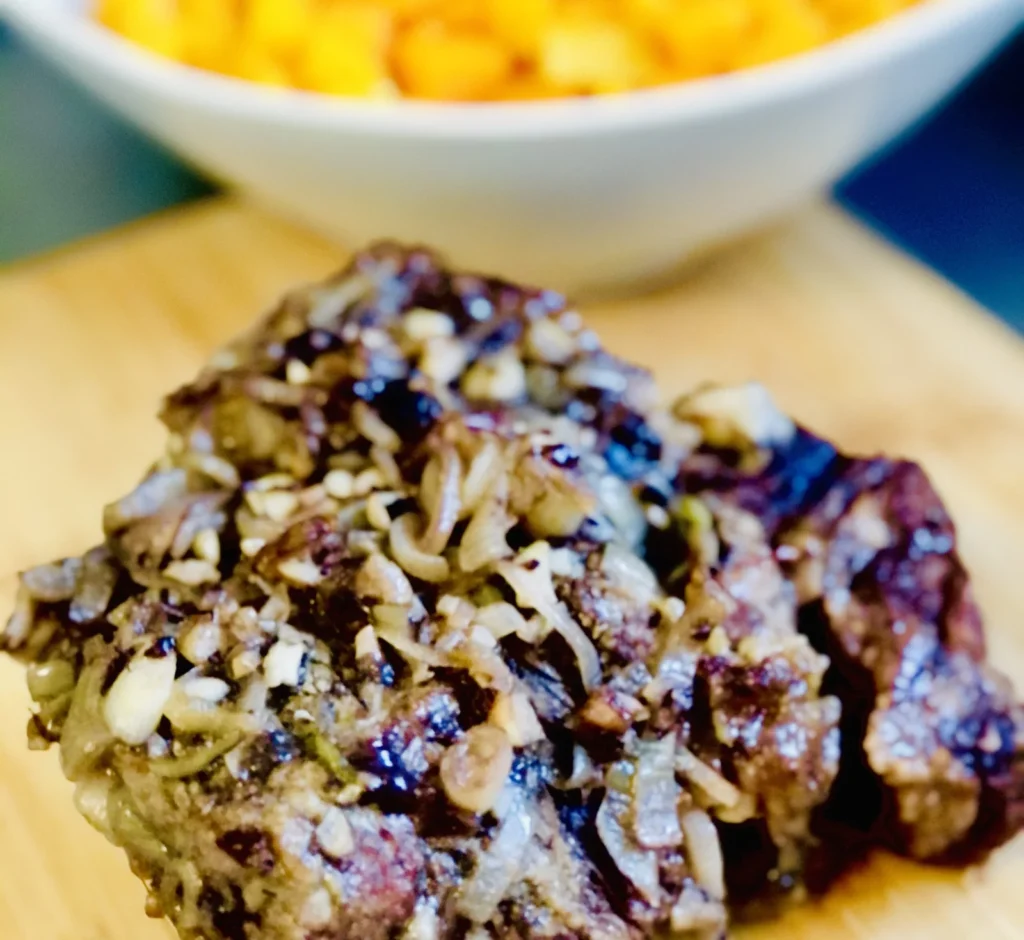Best Non Alcoholic Red Wine Pairings for Beef Lovers
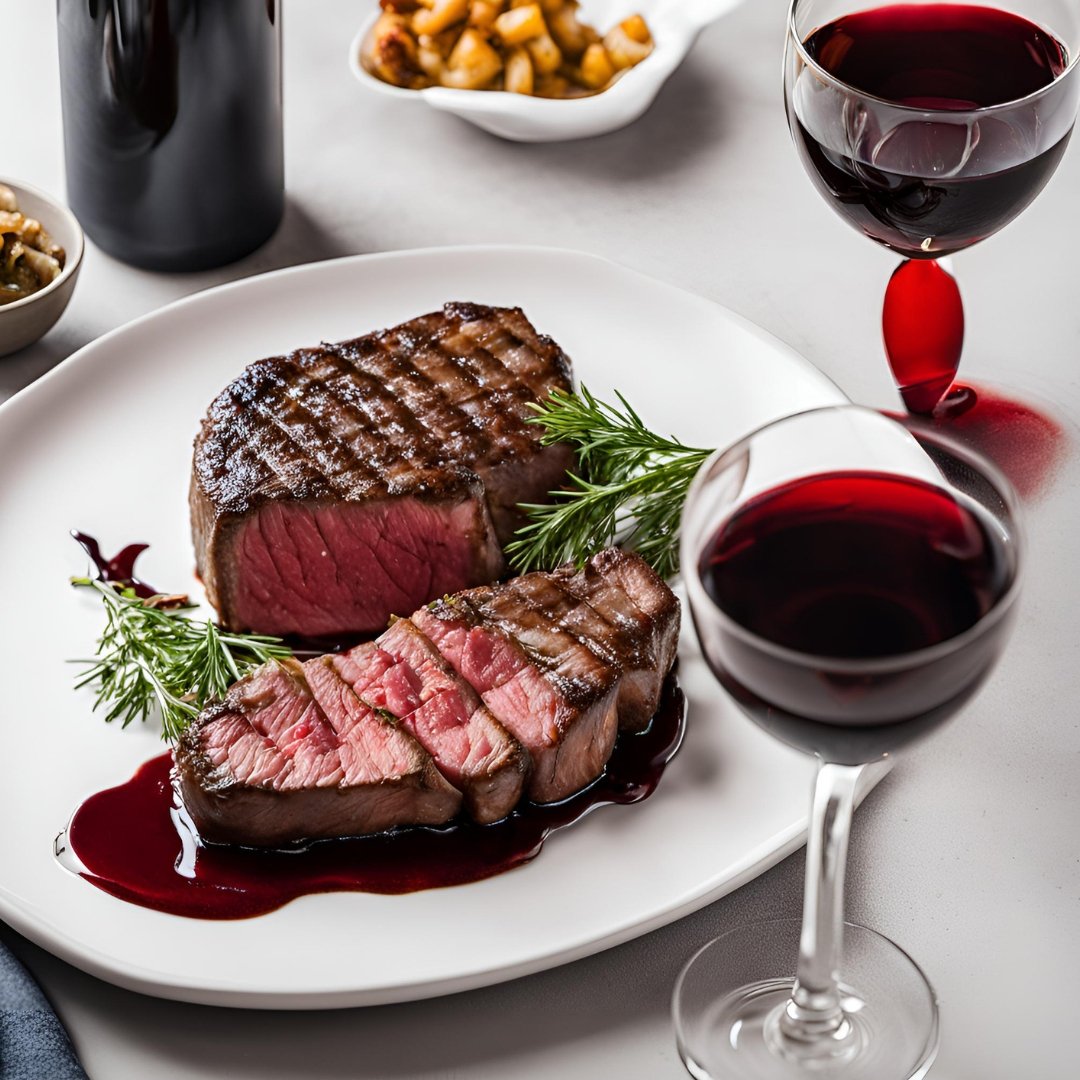
The saying “drink red wine with beef” is a well-known guideline, but the reality is more nuanced. With a vast selection of non-alcoholic red wines available and over 100 different cuts of beef, choosing the perfect pairing can be quite complex. Each cut has its own flavor profile and texture, which can significantly influence the ideal wine selection.To simplify this process, I’ve compiled some suggestions that will aid you in this culinary adventure. For those following a Keto or low-carb lifestyle, pairing low-sugar non-alcoholic red wines with a delectable cut of beef can create an exceptional gourmet experience. The right combination not only enhances the meal but also aligns with dietary preferences, allowing everyone to enjoy the flavors of a beautifully cooked beef dish without compromising on their health goals.
What Are Some Tips to Pairing Non Alcoholic Reds with Beef?
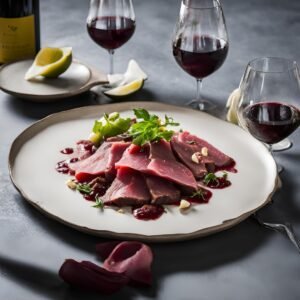
Characteristics of Non-Alcoholic Red Wines:
Non-alcoholic red wines exhibit a range of flavor profiles influenced by the wine region, grape variety, and vinification process. Each grape variety typically has a recognizable taste profile, which can help in pairing them with suitable dishes. For instance, Gamay Noir and Pinot Noir are known for producing light, fruity red wines. While high-quality versions of these wines can offer complex aromas and flavors, they remain light-bodied.Identifying specific characteristics in non-alcoholic reds can be more challenging due to the absence of alcohol, which contributes to the wine’s body and texture. Therefore, it’s crucial to read tasting notes and reviews before purchasing non-alcoholic red wines. This way, you can make an informed decision based on the experiences of others.Recommended Pairings with Beef:
- Pinot Noir (zero alcohol): Pinot Noir is an excellent match for beef carpaccio due to its light body and delicate fruit flavors, which enhance the dish without overpowering it. The wine’s acidity can balance the richness of the raw beef, making it a classic pairing.
- Syrah/Shiraz (zero alcohol): This wine’s bold flavors and earthiness complement hearty dishes like grilled steak or beef stew. The richness of the meat balances well with the wine’s tannins, making it a classic choice for beef dishes.
- Merlot (zero alcohol): With its smooth tannins and fruity notes, Merlot pairs beautifully with a juicy burger or steak topped with caramelized onions. Its moderate body allows it to enhance the flavors of the beef without overpowering it. Braised Beef Short Ribs also pair excellently with Merlot due to the wine’s smooth, fruity profile, which complements the rich, savory flavors of the dish. The slow-cooking method enhances the umami notes from the beef and pancetta, creating a harmonious balance that elevates both the meal and the wine.
More Pairings:
- Cabernet Sauvignon (zero alcohol): This wine’s robust profile can stand up to richer cuts of beef, such as ribeye or filet mignon. It complements the savory flavors of the meat and can also work well with aged cheeses. The delicate nature of filet mignon, especially when paired with a rich sauce, offers a luxurious match for Cabernet Sauvignon, allowing the wine’s complexity to shine.
- Tempranillo (zero alcohol): Known for its earthy notes, Tempranillo pairs well with roasted vegetables alongside beef, enhancing the overall flavor experience. Grilling a rib-eye marinated with fresh herbs and garlic is another excellent choice. The herbal notes in the marinade resonate with the wine’s balsamico character, creating a harmonious pairing.
- Zinfandel (zero alcohol): The fruit-forward nature of Zinfandel makes it a great match for barbecued or grilled meats, as it complements the smoky flavors while balancing the richness of the beef.
General Pairing Tips:
- Before pairing any flavors, it’s important to match the taste sensations of the non alcoholic wine with the beef or offset them. Generally speaking beef is heavy and so demands a wine with the same weight. This is often referred to as fattiness in the wine and of course we have marbling in the beef.
- Balance Flavors: Once you’ve found a NA wine with enough weight to match, you can look at the flavors of both. Herbal notes in the wine work nicely with fresh herbs like rosemary on the steak.
- Consider Texture: It’s also fun to offset tastes and flavors. For example, the NA wine’s tannin can help to cut through the fattiness of beef.
- Experiment: Don’t hesitate to try different combinations. Each non alcoholic wine can bring out unique flavors in various beef dishes, so feel free to explore and find what you enjoy most.
- Acidity Matters: Pairing with sides that have some acidity, like a tomato-based sauce or a vinegar-based salad, can help brighten the overall meal and enhance the wine’s acidity and fruitiness.
What Are The Best Non-Alcoholic Wines To Pair With Beef?
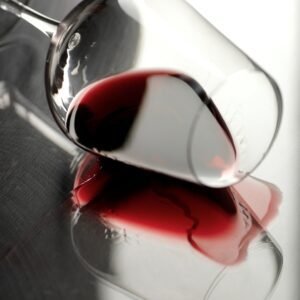
Here are the top non alcoholic red wines to pair with beef dishes:
- YOURS Non-Alcoholic California Red Blend: 6.8 calories and 0.68g sugar per 100mL
- Sovi Reserve Red: 10 calories and 1.3g sugar per 100mL
- Joyus Cabernet Sauvignon: 16.7 calories and 1.3g sugar per 100mL
- Alcohol Removed Cabernet Sauvignon: 13.3 calories and 1.3g sugar per 100mL
- Edenvale Non-Alcoholic Grenach Shiraz Mataro: 10 calories and 1.8g sugar per 100mL
- Naughty Red: 14 calories and 2.5g sugar per 100mL
- Lautus Non-Alcoholic Red: 12 calories and 3g sugar per 100mL
- Edenvale Non-Alcoholic Tempranillo Cabernet Sauvignon: 14 calories and 3g sugar per 100mL
- Luminara Red Blend: 20 calories and 3.2g sugar per 100mL
- Edenvale Shiraz: 17 calories and 3.8g sugar per 100mL
- Edenvale Cabernet Sauvignon: 18 calories and 3.9g sugar per 100mL
- Edenvale Premium Reserve Pinot Noir: 20 calories and 4.3g sugar per 100mL
- Leitz Eins-Zwei-Zero Pinot Noir: 21 calories and 4.9g sugar per 100mL
What Non Alcoholic Wine Alternatives That Work Well With Beef Meals?
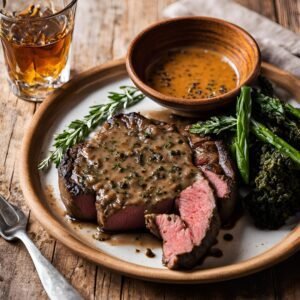
Here are a few non alcoholic beverage alternatives:
Hop Water:
Traditionally, dark beers complement robust cuts of beef, such as ribeye, by balancing the richness with their bitterness. For leaner cuts like flank or skirt steak, nutty brown ales are recommended. For some of us, drinking a non alcoholic beer with beef can be too filling. Instead you can try hop water. This refreshing drink combines carbonated water with the flavor and aroma of hops, offering a delightful alternative to traditional beer. Essentially sparkling water infused with hops, hop water is free from grains, calories, and gluten, setting it apart from non-alcoholic beers that often retain some of these elements.
There are two primary methods for making hop water: the dry hop method, where hops are added to filtered water and left to infuse for several hours, resulting in a softer hop flavor with minimal bitterness; and the hot steep method, which involves heating water, steeping hops for a few minutes, and then carbonating the mixture, yielding a sharper taste and potentially more hop matter in the final product. The choice of hops plays a crucial role in determining the flavor profile, with popular varieties like Citra, Amarillo, and Mosaic imparting fruity and tropical notes, while others may add floral or woody characteristics.
As consumers increasingly seek healthier, non-alcoholic options, hop water has gained significant traction in the beverage market, with sales surging and many breweries producing their own versions. This trend reflects a growing preference for hydration-focused drinks, making hop water a versatile beverage that can be enjoyed at any time of day.
Non Alcoholic Spirits:
CleanCo Clean Whiskey: Julia Child’s preference for whisky with steak, particularly in dishes like steak au poivre, stemmed from her belief in the ability of spirits to enhance flavors and add depth to culinary creations. She often incorporated alcohol, such as whisky or cognac, into her cooking, using it to create rich sauces that complemented the dish. This approach not only elevated the flavors but also added a theatrical element to the cooking process, which Child embraced. Additionally, her personal enjoyment of whisky reflected her philosophy of savoring rich flavors and experiences in the kitchen, famously stating that “the only time to eat diet food is while you’re waiting for the steak to cook,” emphasizing her love for indulgent dining.
Today you can enjoy delicious low sugar non alcoholic whisky paired with beef. CleanCo Clean Whiskey possesses zero sugar per 100 mL. This NA spirit does have some carbs, so still consider the carbs(5.5 g per 100 mL). You don’t know where these carbs derive. The carbs may be from sugar alcohols to give the spirit lovely body. So, in my opinion you should calculate at least 50% of the carbs in your macros, even though there is zero sugar. As for its taste, it’s gentle with some richness, spice and flavors reminisent of apples and figs, moving into a lovely, smooth finish.
The whiskey’s fruity undertones (apple and fig) provide a delightful contrast to the meat’s umami roundness and depth of flavor. This non-alcoholic spirit is particularly well-suited for grilled or saucy beef dishes, as its lighter, cleaner aspects balance the richness of the meat.
Vodka:
CleanCo Clean Apple Vodka Alternative: Beef Stroganoff with vodka sauce is an excellent dish to complement vodka for sipping. The vodka in the sauce enhances the flavors of the tender beef and mushrooms, creating a rich and savory experience. The acidity from the Dijon mustard and the creaminess of the sour cream balance the boldness of the vodka, resulting in a harmonious taste profile. This Keto twist on the classic Russian dish retains its traditional roots while offering a unique flavor dimension. The clean, crisp taste of vodka pairs beautifully with the hearty, savory elements of the dish, making it an ideal beverage to enjoy alongside your meal.
Can Non-Alcoholic Wines Replace Regular Wines In Beef Recipes?
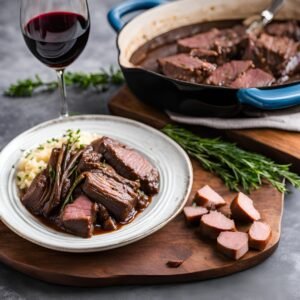
Non-alcoholic wines can indeed be used as substitutes for regular wines in beef recipes, but there are some considerations to keep in mind regarding flavor and cooking techniques.
Here are a few:
Flavor Profile:
- Flavor Complexity: This is a fabulous aspect of pairing non alcoholic red wine with food. As we know opposites attract. If your wine offers loads of complexity in the aromas and flavors, prepare a simple beef dish. Let the wine shine. If, on the other hand, the beef dish has layers of flavors or combined flavors, let the dish shine and sip a simple wine. It’s always nice to let either the NA wine or the dish shine. If both the non-alc red wine and dish are complication, the mish-mash of flavors can be too much for the nose and palate to enjoy.
Dishes With Sweetness:
- Sweetness: Be sure to check the nutritional label on the red wine before adding it to a dish. Remember that sweetness in the wine will add that sweetness into the dish. This sweetness may not be an integral part of the overall flavor you are trying to capture. This sweetness can complement spicy dishes, however. Sweetness offsets heat and spice. So use red wines with this sweetness in spicier beef dishes.
Dishes include:
- Spicy Firecracker Beef features seared beef mince tossed in a fiery Firecracker Sauce, combining spicy, savory, and slightly sweet flavors, making it a quick and satisfying meal over rice or noodles. With this kinds of heat and spice, you need sweetness in the wine.
- Hot and Spicy Beef is made with thinly sliced flank steak coated in a rich sauce that balances heat with sweetness from brown sugar sweetener, allowing for adjustable spice levels based on the amount of dried chili peppers used.
- Sichuan Hot and Spicy Beef (Xiangla Feiniu) is known for its intense heat, featuring marbled beef stir-fried with a mix of Sichuan pepper, chili oil, and fresh chilies for a flavorful and numbing experience.
- Lastly, Korean Spicy Beef is marinated in a spicy sauce made with gochujang and soy sauce, resulting in a sweet and tender dish that pairs well with various sides. These dishes showcase a variety of flavors and heat levels, catering to different spice preferences. The same holds true for these other dishes. They all demand a wine with sweetness to offset the heat and spice. In living a low carb lifestyle, we don’t want to sip a wine loaded with sugar. Instead, choose a dry rose and add a pinch of monk fruit sweetener. If this is not something you choose to do, find a rose with a little sweetness and cut back on the heat and spice. The other alternative is to simply eat and drink whatever you like and not care about the harmonizing of the partnership.
Cooking Techniques:
- Dilution: When using non-alcoholic wine, especially vinegar-based options, it’s advisable to dilute them with water to reduce acidity. For instance, a 1:1 ratio of vinegar to water can help mimic the acidity of regular wine without overwhelming the dish.
- Heat Adjustment: Non-alcoholic wines may require adjustments in cooking heat and time. Since they lack alcohol, which evaporates during cooking, you might need to simmer them longer to achieve a similar reduction and integration into the dish.
Flavor Profile and Cooking Techniques:
- Quality Matters: Use high-quality non-alcoholic wines that are made through processes like vacuum distillation or reverse osmosis. These methods help retain the flavor profile similar to regular wines, making them suitable for cooking.
- Cooking Applications: Non-alcoholic red wine can be used in various beef recipes, such as stews and braises. For instance, it can replace traditional red wine in dishes like beef bourguignon, where it contributes to the overall flavor and helps tenderize the meat.
- Balancing Flavors: Non-alcoholic wines tend to be sweeter than their alcoholic counterparts, which can be beneficial in balancing spicy or rich flavors in beef dishes. This sweetness can enhance the natural flavors of ingredients like vegetables, making it a good match for recipes that include sweet potatoes or carrots.
- Enhancing Depth: To mimic the complexity of red wine, consider adding ingredients like cocoa powder or non-alcoholic bitters. These can help replicate the depth and richness typically provided by alcohol in cooking.
Here Are Some Non Alcoholic Wine Articles You Might Enjoy:
- Non-Alcoholic Wine To Elevate Your Thanksgiving Feast
- Best Non Alcoholic Wine Options For Low Carb Thanksgiving
- Non Alcoholic Sparkling Wine and Low Carb Sourdough Delights
- Non Alcoholic Wine Explained For Low Carb Sippers
- 10 Unique & Healthy Mocktails You Need To Try
- Cracking The Code Of Pairing Non Alcoholic Wines With Cheese
- Secrets To Pairing Alcohol-Free White Wines with Seafood Delights
- How To Choose The Best Zero Alcohol Red Wine
- ONES Sparkling Rose & Lemon-Ginger Cod
- 16 Jaw-Dropping Non Alcoholic Wine Health Benefits
- Non Alcoholic Wine Explained For Low-Carb Sippers
- How To Master Non-Alcoholic Wine Etiquette At Social Events
- How To Choose The Best Zero Alcohol Red Wine
- Cracking The Code Of Pairing Non Alcoholic Wines With Cheese
Low Carb Montreal Strip Loin Paired with Non Alcoholic Red: Zinfandel
The predominant taste sensation of this low carb Montreal Strip Loin is fattiness due to the beef. Think big non alcoholic red. Choose a red non alcoholic wine with some earthiness to add to the herbal tones in the spice mix. Go for Cabernet Sauvignon, Cabernet Franc, Zinfandel, Grenache, or a hefty Merlot.
Low Carb Crock Pot Beef Paired with Non Alcoholic Red: Pinot Noir
Does wine work with Keto Crock-Pot Beef? Red meat, due to its fattiness, always works better with red non alcoholic wines. This is similar in flavors to a classic French beef stew from Burgundy called Beef Bourguignon. Therefore, enjoy a glass of Burgundy, vinified from the de-alcholized Pinot Noir grape. If you want to sip something more substantial in wine, choose a red with more weight and thickness to stand up to the weight and fattiness of red meat. Consider de-alcholized Shiraz, Merlot, Grenache.

Low Carb Bacon Covered Meat Loaf Paired with Non Alcoholic Red: Cabernet Sauvignon
With the predominant taste sensations of Keto Low-Carb Bacon-Covered Meatloaf being fattiness, umami, a little tanginess and saltiness, choose a full-bodied non-alcoholic red wine. These reds offer lots of earthy character, along with pleasant bitterness and astringency. The wine’s gentle tannin will nicely offset the fattiness and saltiness of bacon. Think Zinfandel, Shiraz, Cabernet Sauvignon, Cabernet Franc.

Low Carb Korean Short Ribs Paired with Non Alcoholic Red: Rose
Fattiness and sweetness are the predominant taste sensations in these Keto Korean Short Ribs. The sweetness (from the sweetener) in the ribs will clash with the tannin in non alcoholic red wine, leaving an offensive bitter taste on your palate. We have a couple of choices to choose from when it comes to picking a non alcoholic wine. In following a Keto diet or in living a low-carb lifestyle, we don’t want to use up your carbs on a glass of wine. Why add the extra carbs to your meal when you can find low to zero carb non-alcoholic wines! You have a couple of options.
Drink whatever wine you like (as long as it’s bone dry) and don’t worry about pairing the wine to dish. Enjoy your non alcoholic wine the way you like it. If you like to create harmony between the non-alc wine and the food, you’ll need some sweetness in the wine to offset the heat and spice. Add a pinch of monk fruit sweetener to your glass of NA wine. Choose a rose with some structure. Add the sweetener. The non alcoholic wine’s sweetness will nicely offset the heat and spice.
Low Carb Best Meat Balls Paired with Non Alcoholic Red: Shiraz
With the predominant taste sensations of the meatballs are fattiness, umami, a little tanginess and saltiness. Choose a big non alcoholic red wine. These reds offer lots of earthy character, along with pleasant bitterness and astringency. The non-alc wine’s gentle tannin (bitterness and astringency) will nicely offset the fattiness and saltiness of bacon. Think de-alcoholized Zinfandel, Shiraz, Cabernet Sauvignon, Cabernet Franc or a blended wine with some weight.
Low Carb Montreal Strip Loin Paired with Non Alcoholic Red: Zinfandel
The predominant taste sensation of this low carb Montreal Strip Loin is fattiness due to the beef. Think big non alcoholic red. Choose a red non alcoholic wine with some earthiness to add to the herbal tones in the spice mix. Go for Cabernet Sauvignon, Cabernet Franc, Zinfandel, Grenache, or a hefty Merlot.
Low Carb Crock Pot Beef Paired with Non Alcoholic Red: Pinot Noir
Does wine work with Keto Crock-Pot Beef? Red meat, due to its fattiness, always works better with red non alcoholic wines. This is similar in flavors to a classic French beef stew from Burgundy called Beef Bourguignon. Therefore, enjoy a glass of Burgundy, vinified from the de-alcholized Pinot Noir grape. If you want to sip something more substantial in wine, choose a red with more weight and thickness to stand up to the weight and fattiness of red meat. Consider de-alcholized Shiraz, Merlot, Grenache.

Low Carb Bacon Covered Meat Loaf Paired with Non Alcoholic Red: Cabernet Sauvignon
With the predominant taste sensations of Keto Low-Carb Bacon-Covered Meatloaf being fattiness, umami, a little tanginess and saltiness, choose a full-bodied non-alcoholic red wine. These reds offer lots of earthy character, along with pleasant bitterness and astringency. The wine’s gentle tannin will nicely offset the fattiness and saltiness of bacon. Think Zinfandel, Shiraz, Cabernet Sauvignon, Cabernet Franc.

Low Carb Korean Short Ribs Paired with Non Alcoholic Red: Rose
Fattiness and sweetness are the predominant taste sensations in these Keto Korean Short Ribs. The sweetness (from the sweetener) in the ribs will clash with the tannin in non alcoholic red wine, leaving an offensive bitter taste on your palate. We have a couple of choices to choose from when it comes to picking a non alcoholic wine. In following a Keto diet or in living a low-carb lifestyle, we don’t want to use up your carbs on a glass of wine. Why add the extra carbs to your meal when you can find low to zero carb non-alcoholic wines! You have a couple of options.
Drink whatever wine you like (as long as it’s bone dry) and don’t worry about pairing the wine to dish. Enjoy your non alcoholic wine the way you like it. If you like to create harmony between the non-alc wine and the food, you’ll need some sweetness in the wine to offset the heat and spice. Add a pinch of monk fruit sweetener to your glass of NA wine. Choose a rose with some structure. Add the sweetener. The non alcoholic wine’s sweetness will nicely offset the heat and spice.
Low Carb Best Meat Balls Paired with Non Alcoholic Red: Shiraz
With the predominant taste sensations of the meatballs are fattiness, umami, a little tanginess and saltiness. Choose a big non alcoholic red wine. These reds offer lots of earthy character, along with pleasant bitterness and astringency. The non-alc wine’s gentle tannin (bitterness and astringency) will nicely offset the fattiness and saltiness of bacon. Think de-alcoholized Zinfandel, Shiraz, Cabernet Sauvignon, Cabernet Franc or a blended wine with some weight.
I’m excited to share with you my good news… Introducing Sinless Sourdough – Where Ancient Art Meets Low Carb Science!

Stop sacrificing flavor for your health goals – our authentic heritage sourdough starters have been specially adapted for low-carb baking
Limited Time Offer: 82% OFF – Only $19.99 Today (Regular Price: $113)
Sinless Sourdough™ Starter + Membership Includes:
- Authentic Heritage Starter shipped directly to your door
- Complete Video Training Library showing you step-by-step how to create:
- Artisan boules and batards with delicious crispy crust and soft interior
- Crisp French baguettes for the dinner table or as crostini
- Chewy Montreal-style bagels that won’t spike your blood sugar
- German street pretzels with authentic alkaline crust
- Convenient everyday bread machine loaves for sandwiches
- Supportive Community of fellow low-carb bakers to share your journey
- Extensive Recipe Collection for using sourdough discard (nothing goes to waste!)
“After years of disappointing low-carb bread experiments, Sinless Sourdough changed everything. I’m enjoying real sourdough again without the carb guilt!” — Maria T.
“My family can’t tell the difference between these loaves and traditional bread. The starter is incredibly active and the results are amazing!” — James K.
🔥 CLAIM YOUR MEMBERSHIP NOW 🔥
Use code: Sinless82 at checkout Offer expires soon! Limited starter batches available
82% OFF TODAY FOR MEMBERSHIP
Sinless Sourdough™ Heritage Collection

Transform your low-carb baking with our Global Heritage Collection featuring unique starters from historic moments across continents. Each brings its own personality and flavor profile while maintaining excellent nutritional values—just 1g net carbs compared to 8-10g in traditional starters.
Choose from:
- 1849 San Francisco Gold Rush – Authentic California sourdough character
- 1898 Yukon Gold Rush – Subtle tanginess with notes of butter
- 1847 Oregon Trail – Rustic character with exceptional rise
- 1000-Year-Old Italian Monastery – Delicate complexity with ancient lineage
Each starter connects you to centuries of baking tradition while supporting your modern low-carb lifestyle. Our proprietary transformation process preserves their unique characteristics while adapting them for health-conscious baking.
When you purchase any Sinless Sourdough™ starter, you receive our comprehensive onboarding sequence teaching you exactly how to revive your dehydrated starter for perfect low-carb, high-protein results every time.
Click the link:
SINLESS STARTER SHOP
🍞 START YOUR LOW-CARB SOURDOUGH JOURNEY TODAY!
Medical Studies and Reviews on Sourdough
Here they are:
Does Sourdough Bread Provide Clinically Relevant Health Benefits?
The Sourdough Microbiome
Study Of Sourdough Starter Microbiome To Boost Bread Quality and Safety
Sourdough Microbiome Comparison and Benefits
Effect of Breadmaking Process on In Vitro Gut Microbiota Parameters in Irritable Bowel Syndrome
Nutritional Benefits of Sourdough; Systematic Review
Sourdough-leavened bread improves postprandial glucose and insulin plasma levels in subjects with impaired glucose tolerance
Use of sourdough in low FODMAP baking
A novel formulation of sourdough bread enriched with plant sterols and high-fibre inulin improves metabolic control in type 2 diabetes
Impact of sourdough fermentation on appetite and postprandial metabolic responses – a randomised cross-over trial with whole grain rye crispbread
Disclaimer:
All information provided on this website regarding the health benefits of sourdough low carb bread is intended for educational purposes only. The content presented is not meant to be taken as specific medical advice for any individual. It should not be considered a replacement for professional medical guidance or treatment. If you have any health concerns, especially related to diabetes, pre-diabetes, or any other medical condition, please consult with a healthcare professional immediately.
- UNUSUAL KETO INSTANT POT RECIPES FOR 2025 - April 27, 2025
- Boost Your Keto Diet with These Non-Alcoholic Wine Hacks - April 27, 2025
- 10 Unique & Healthy Mocktails You Need to Try - April 27, 2025


